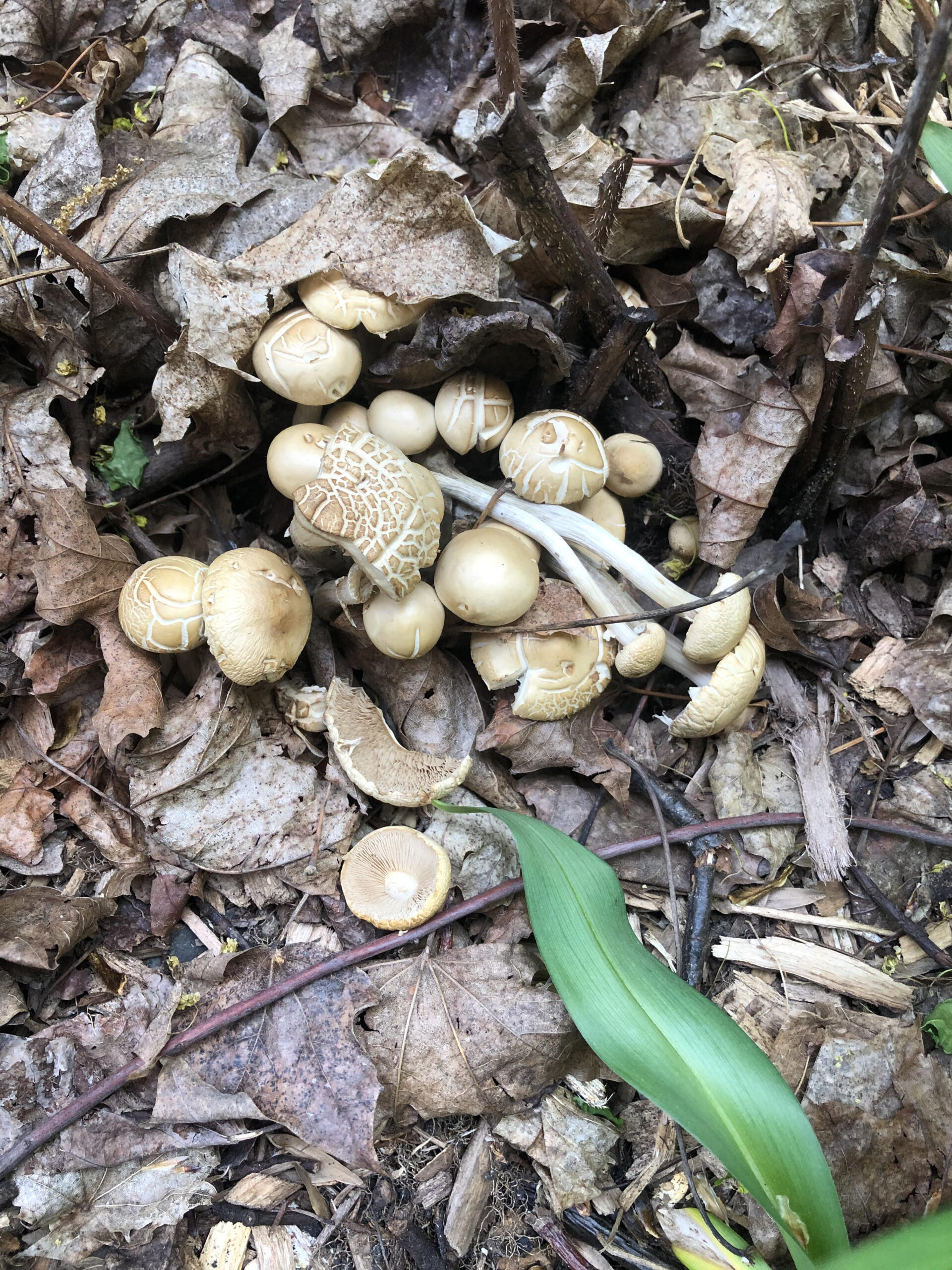A spot of yellow in a tree at first appears to be an upturned leaf, before it squeaks and flits away. The breeding plumage of a yellow warbler is astoundingly bright, all hot dog mustard with red streaks, topped with olive wings. Or is that a prothonotary warbler, similar, but minus the stripes and the wing bars? A lady oriole? Or are you really looking at a white-eyed vireo, throwing its voice from halfway across the woods?
On a path a mile away, there’s no mistaking the mute swan building her nest under a bridge in the marsh. She stands atop a pile of straw and sticks already 3 feet wide, every now and then nudging individual pieces just slightly to the left or the right. She steps back and surveys her work, checking some sort of bird blueprint unavailable to us humans. The next day the nest is empty, but either she or her mate is floating nearby, guarding their unfinished property.
Way off in the bay, a trio of dolphin fins break the surface and then vanish. A solitary American oystercatcher sits perfectly still on the sand, the only bird on an acre of empty, fenced-off beach. Not empty: a dozen or so least terns are chatting amongst themselves about 100 yards off, their gray and white plumage perfect camouflage against the sand on a cloudy day.
Further up the beach, the horseshoe crabs are beginning to wash up in the surf. Hundreds of laughing gulls gather to snack on their eggs. Over the next few weeks, the number of crabs will increase exponentially, offering a seafood buffet for migrating shorebirds making their way north. On a single day in May 2019, two days after the full moon, an estimated three-quarters of a million horseshoe crabs were estimated to have flung themselves onto the shores of the Delaware Bay.
Sometimes they gut stuck. Assuming you can do so without disturbing flocking birds, the U.S. Fish and Wildlife Service it’s OK to turn them over.
I flipped over a couple of stranded crabs myself early last week. Their surprising heft was just one of the many ways that Cape May, New Jersey, reset my expectations for the kinds of natural experiences one might have in the most urbanized state in the country. The title for this post is taken from the surprisingly apt name of a book published in 2000 by Joanna Burger and Michael Gochfeld. Truly, New Jersey is spectacular. I find that witnessing the wonders of nature in the unlikely wilds of South Jersey recalibrates my ability to notice the ever-present-ness of the natural world around me, wherever I am. There are mushrooms in the alley, and parulas in the poplars.

In the United States, most of us live somewhere amongst the ruins of late industrial capitalism. Our cities are built on layers and layers of industrial waste, our suburbs on former farmland and timber. My favorite parts of Cape May included a former industrial-scale cranberry bog turned bird haven (Belleplain State Forest) and an estate turned golf course turned wildlife management area (Cox Hall Creek WMA). In Pennsylvania, a spectacular trail cutting through the Lehigh Valley takes bikers through forests once valued primarily for hemlock bark, a crucial ingredient for the region’s long-gone—and highly toxic—tanning industry. Back near where I grew up, the Patoka River National Wildlife Refuge sits atop reclaimed strip mines.
The idea that we can still find beauty in formerly/still toxic places doesn’t release us from our obligations to those spaces. Instead, it’s an acknowledgement that we live in and around them, as do many other plants and creatures we too rarely bother to notice. Within science studies, the field of discard studies asks us to think about what it means to live with and among the ruins—and what we consider waste in the first place.
I don’t have a tidy ending for this newsletter. I had a draft that explored the connection between post-industrial nature watching, citizen science, and environmental activism. Yet another offered a more meditative reflection on bird watching and mushroom hunting as place-based knowledge systems. There were others, too, on rural policing, bird apps, and the gender dynamics of off-season beaches. In the end, like a warbler, I found myself more interested in flitting between ideas than sitting still. Birds are good for that.